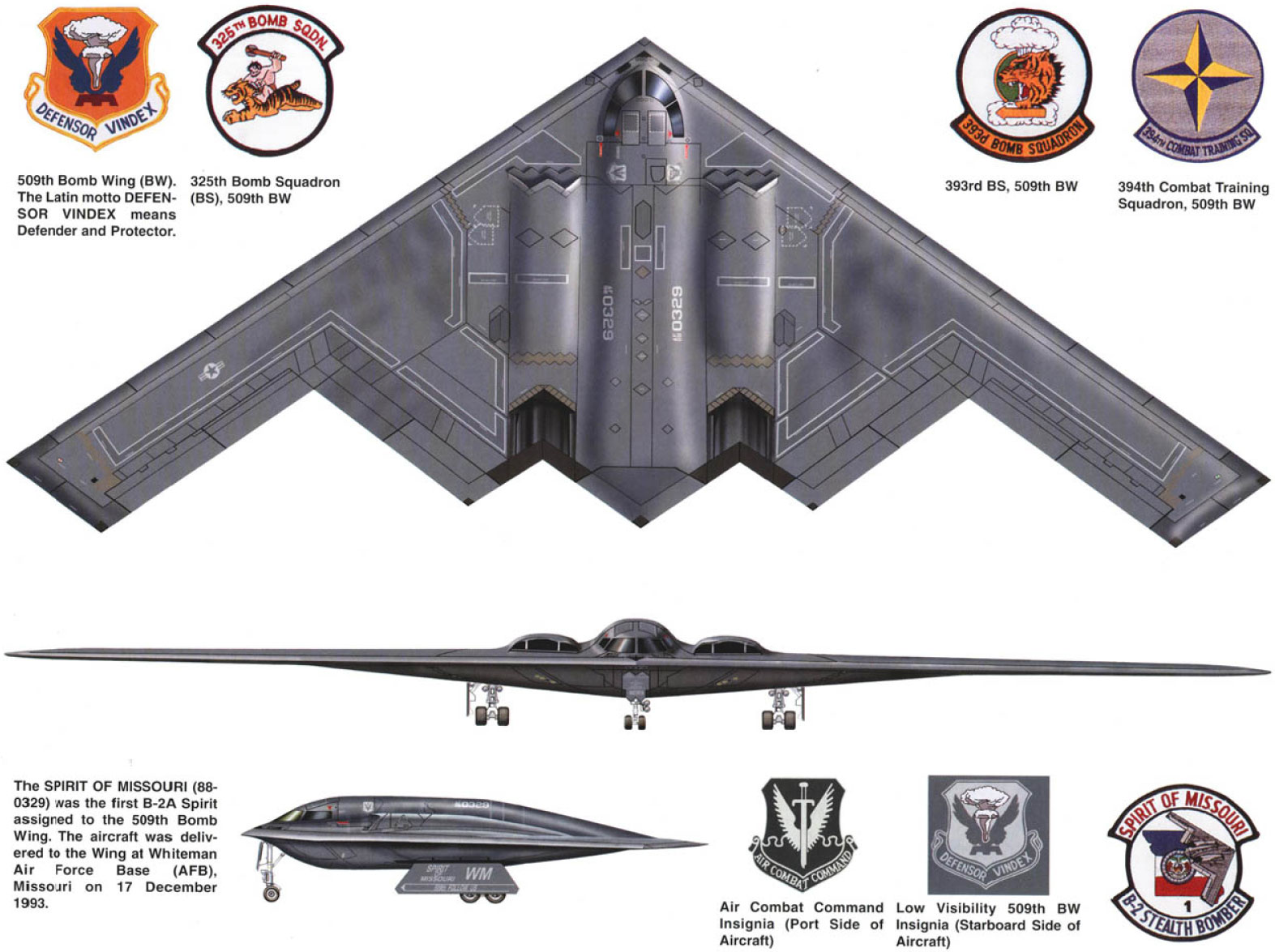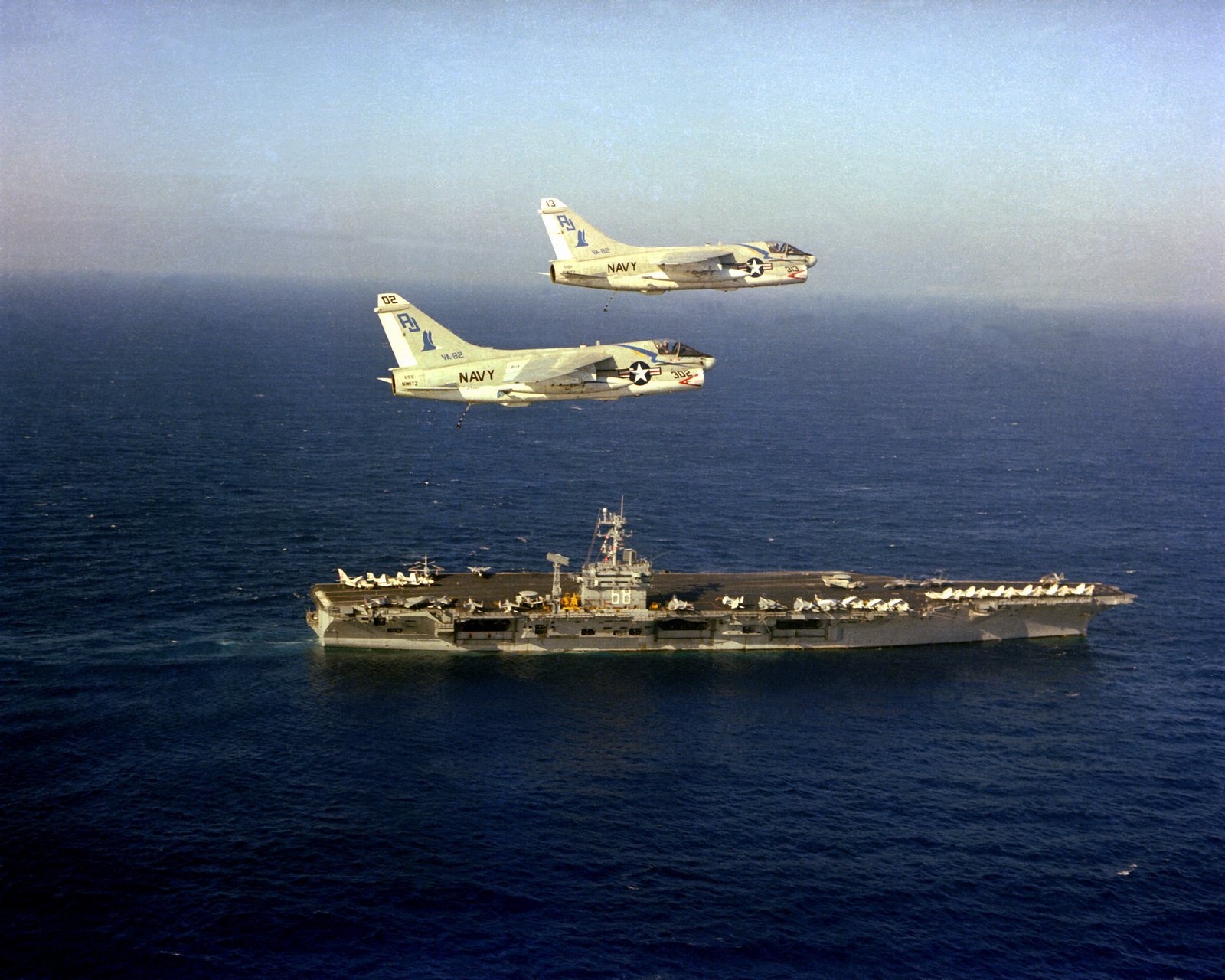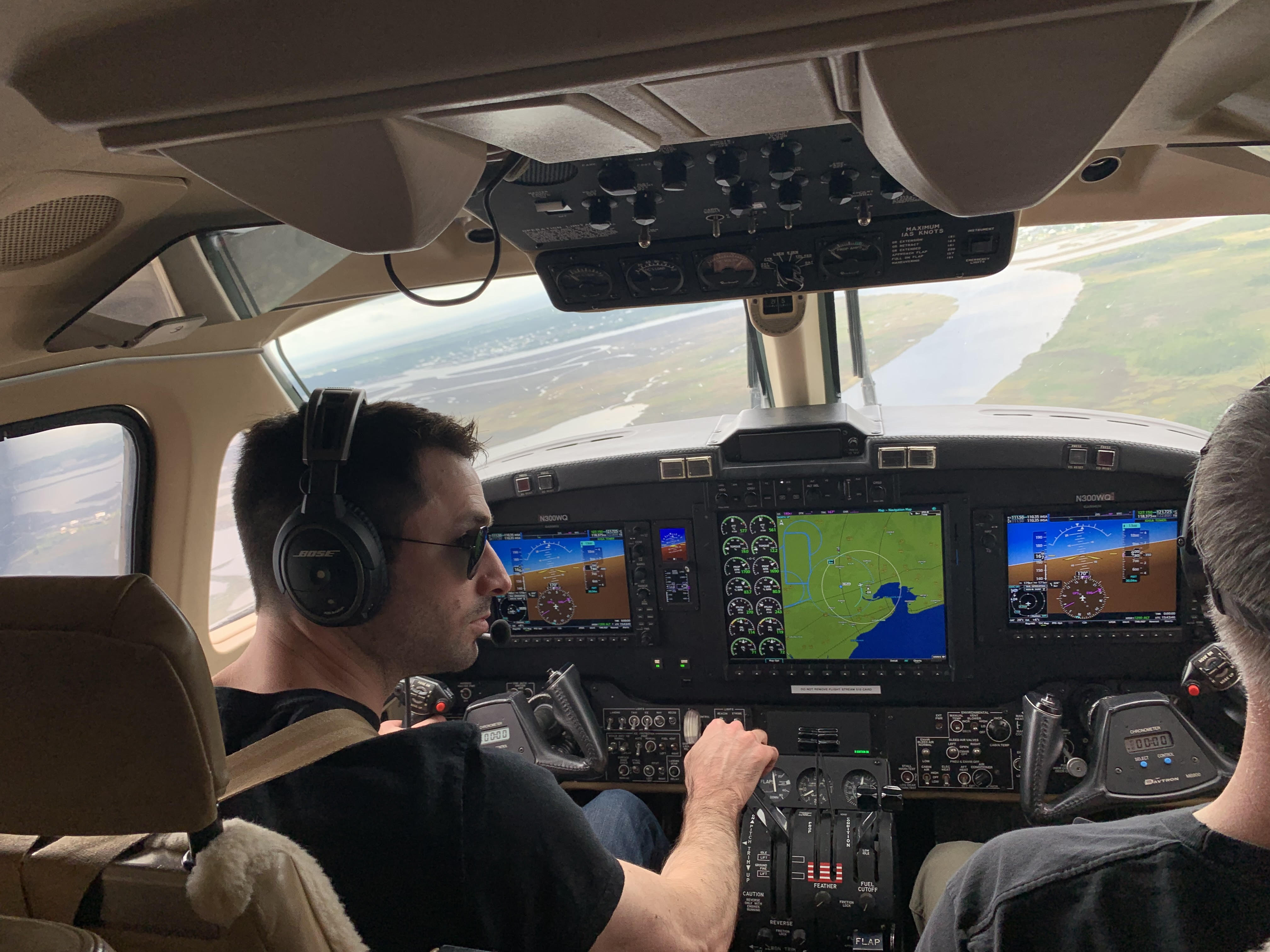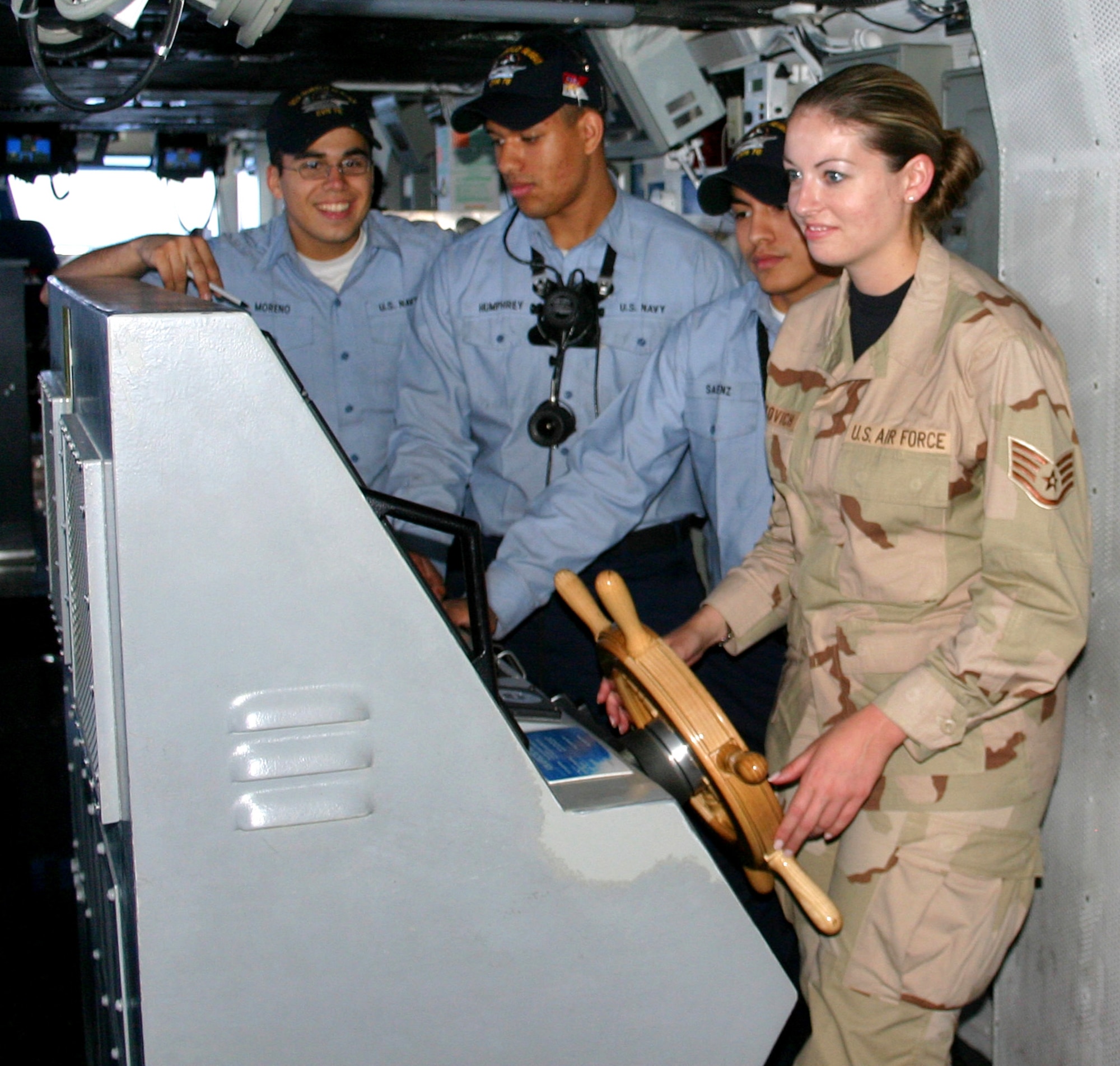Starboard Aircraft - The cannon also creates so much smoke while firing that it could choke out a jet engine. The engines, in original testing, could not get enough oxygen while the cannon were firing, so a unique combustion chamber was created to keep the engines running while the gun was firing.
Finally, the recoil from the cannon is so powerful that it affects the airplanes' trajectory. Therefore, the GAU-8/A 30mm cannon was installed off-center slightly to offset that change caused by the recoil. With the weapon's massive recoil offsetting the front landing gear from the center, it causes the A-10 Warthog to have an unequal turning radius.
Starboard Aircraft

Turning right on the ground takes less distance than turning left. The Warthog gun makes a distinctive brrrrt sound when firing. The A-10 weapons delivery systems include heads-up displays that indicate altitude, navigation information, dive angle, airspeed, and weapons aiming references.
About Author
Also, a low altitude safety and targeting enhancement system (LASTE) computes the impact point continuously for free-fall ordnance delivery. While the A-10 is renowned for durability, the first adoption of the aircraft did have a few problems.
Davis-Monthan Air Force Base, Ariz. received the first-ever production A-10 in October 1975. When production began in full in 1976, initial fatigue testing failed to meet the new 8,000 hour standard. However, further testing by the engineers at Fairchild Republic found that they needed to reinforce the airframe in order to fix the issue.
This was relatively minor. After the correction, 715 airplanes were ordered at the rate of 15 aircraft per month. In nautical terms, the bow or fore lies at the front of the ship, while the stern or aft is the rear portion.
This definition of port and starboard ensures that these directions are unique regardless of the position of the concerned party. The origin of these terms come from the old English usage for their respective purposes. In the times of early boats that were steered with the aid of a steering oar at the stern, the majority of sailors were right-handed.
Origin Of The Terms – Port And Starboard
In the early days of boating, before ships had rudders on their centerlines, boats were controlled using a steering oar. Most sailors were right handed, so the steering oar was placed over or through the right side of the stern.
Sailors began calling the right side the steering side, which soon became "starboard" by combining two Old English words: stéor (meaning "steer") and bord (meaning "the side of a boat"). This led to the left side being called the larboard, based on the corruption of the old English term for loading.
However, it was common to confuse the terms larboard and starboard while sailing, as they sounded similar. Thus, larboard was later replaced by the term port. This also helped in other terminology, as it was the left-hand side that was moored to the port.

The 30 mm GAU-8/A Avenger rests in the front of the aircraft. The front landing gear retracts from under the wings in an offset position, with the rear wheels in line with the fuselage. This set up allows room for the massive weapon.
Structure And Construction Of Port And Starboard
The barrel of the GAU-8/A extends out from the nose of the A-10. It is the heaviest automatic cannon ever mounted on an aircraft. One of the most interesting A-10 facts deals with its armor. The skin of the aircraft is not structural, and any damage done to it does not compromise the heavily reinforced airframe.
The cockpit and flight control functions are the most heavily protected. These are surrounded by 12,000 lbs of titanium aircraft armor in a configuration lovingly referred to as "the titanium bathtub". Angled to deflect incoming fire, this armor has a nearly flawless track record for keeping pilots safe.
Combined with the windscreen and canopy—which are also resistant to small arms fire—the total armor on the aircraft makes up just over 7% of its empty weight. Interestingly enough, the A-10 is so well armored that it can fly through super-cell thunderstorms - the Air Force even uses the A-10 Warthog to monitor severe weather systems.
In the case of unsymmetrical vessels as well, the two halves are never separately assembled. In general, most ships are symmetrical about their centerline on both sides. This has proven to be the ideal design that allows for the least resistance in moving a ship.
For the purpose of this article, we will assume that all ships and vessels are symmetrical below the waterline, as this is the only region where fluid resistance acts. The region above the waterline can be either symmetrical or not based on their use.
In 1966 the U.S. Air Force issued a Requirements Action Directive, outlining its needs for a ground attack aircraft and inviting manufacturers to submit a potential design. The requirements were simple but challenging to fulfill. The new aircraft needed to be inexpensive, robust, with payload of 16,000 lbs, a takeoff runway distance of 4,000 feet or less, a long loiter time, excellent low-speed maneuverability and extreme survivability.
A company named Fairchild Republic answered the call, and began working on prototypes that would become the A-10 Warthog. Since port and starboard never change, they are unambiguous references that are independent of a mariner's orientation, and, thus, mariners use these nautical terms instead of left and right to avoid confusion.
When looking forward, toward the bow of a ship, port and starboard refer to the left and right sides, respectively. As Argus had a flush deck, she was controlled from a retractable chart house in the middle of the flight deck forwards or from 'wings' on either side of the flight deck forwards when the chart house could not be used.

Smoke was carried away from the boilers via ducts that ran through the hangar and out of the ship's aft. This arrangement proved to be unsatisfactory, turning the hangar into an oven and making approaches difficult.
For future designs, the Royal Navy began to examine the use of single islands, and that's when the Royal Navy realized their mistake of rejecting Williamson's idea. Some A-10s have a 'false canopy' painted on the belly of the aircraft.
The diversion is meant to confuse enemy pilots into thinking the paint is actually a shadow cast by the real canopy - hopefully, tricking them into thinking the A-10 is going in a different direction at a different altitude.
For example, take an object initially at a certain angle on the port. If it is able to cover a fixed angle in a set amount of time, the distance covered and the speed of the object can be calculated through basic trigonometry.
Thus, the port and starboard terms have a profound usage in the field of navigation and manoeuvring. Studies have shown that most pilots turn to the left when faced with an aborted landing, and even during accidents.
This logic is followed even while driving on roads in some countries. Most cars have steering wheel positions that enable the driver to safely pull over to the left, instead of heading to the right where there is incoming traffic.
(adsbygoogle = window.adsbygoogle || []).push({}); Inspired by Williamson's design, HMS Hermes - the first proper aircraft carrier, designed and built from the keel up as an aircraft carrier, not a conversion - and her sister ship HMS Eagle, had islands on the starboard side.
As the size of boats grew, so did the steering oar, making it much easier to tie a boat up to a dock on the side opposite the oar. This side became known as larboard, or "the loading side."
Over time, larboard—too easily confused with starboard—was replaced with port. After all, this was the side that faced the port, allowing supplies to be brought aboard by porters. To do so, information can be fed into the system in the form of two parameters - the angle of change, and whether the change is in the port or starboard side.
Such an automated system reduces the chances of error and allows the officers to attend to more immediate duties. These steering oars functioned as the rudders of the craft and had to be expertly maneuvered. Hence, it was easier to have the steering oar on the right-hand side so that the sailor was facing forward comfortably.
This led to the right half that he sat on being called the steerboard which was later corrupted into starboard. The A-10's hydraulics systems are double-redundant, and a mechanical backup system controls the plane if the hydraulics is lost.
Damaged wing skins can be replaced relatively easily in the field - even with alternative materials. The production skins are not load-bearing, which means replacing them is simple. Engineers even considered the importance of wheel retraction.
On the A-10, when the wheels retract, they still slightly protrude outside of the nacelle. The purpose is if the aircraft has to land with its gear up, it will limit damage to a degree. Also the landing gear, engines, vertical stabilizers, and some other parts on the A-10 are left and right interchangeable - meaning they can operate on either side.
That allows the aircraft to be serviced at a forward location and put back in combat much sooner than other aircraft. After a brief deployment during the invasion of Granada, the A-10 first saw real combat during the 1991 Gulf War.
With concerns about Iraq's large and well-equipped armor divisions, the A-10 Warthog became the backbone of the coalition's close air support. On the second day of the war, two A-10's destroyed 23 Iraqi tanks across three sorties.
The display caused some Iraqi soldiers to refer to the A-10 as the "Cross of Death." The name likely stems from the plane's semblance to a cross from underneath. According to official records from the conflict, the A-10 Warthog had a mission capable rate of 85 percent and fired 311,597 rounds of 30 mm ammunition over the course of hostilities.
Despite the many dangerous missions flown, only a single Warthog was shot down by the enemy. Red is the international convention for the port side, while green is the color for the starboard side. This is common on aircraft and helicopter vessels.
This is because aircraft need to be able to judge the two halves of the ship during night flights, and the main deck lights are often turned off for military reasons, especially during times of war.
Secretary of Defense James Schlesinger said, in 1973, he would remove a limit on the total amount of wings (think hangers) for Air Force fighters if Air Force General George S. Brown, then the USAF Chief of Staff, would support the A-
10 Warthog for years to come. Hence Flying Officer Williamson's design had the island on the starboard side as it was logical for an approaching aircraft to circle in from the left, and during touchdown, if it failed to arrest, to fly off to the left (due to the natural swing of
the aircraft to port). Once this is done, heading and other related information are fed into the system before appropriate action is taken. This system of reporting by using both an angle and a side is useful when it comes to calculating the speed of an object.
In general, 0⁰ to either side does not result in any change in direction. For instance, 90⁰ to starboard indicates that the vessel must now proceed in a direction perpendicular to the initial direction, and on the starboard side.
This was the auspicious beginning of a long career, as the A-10 is still proving itself effective during the ongoing War on Terror in the Middle East and Afghanistan. As of 2015, the A-10 Thunderbolt has flown about 11 percent of all United States Air Force sorties against ISIS in Syria and Iraq.
That's a reduction from what it flew in Operation Iraqi Freedom and Afghanistan - about 32 percent of the combat sorties in both theaters. The Gatling gun accounts for 16 percent of the A-10's weight. For perspective, the weapon is larger than a Volkswagen bug.
During maintenance, sometimes the technicians remove the gun from the aircraft. A support is wedged under the tail to keep the nose from tipping up. The GAU-8/A is manufactured to fire high explosive incendiary and armor-piercing depleted uranium rounds at a rate of 3,900 rounds per minute.
These bullets are about the size of beer bottles. When pilots fire the Gatling gun, it heats up quickly and cannot fire for more than a few seconds at a time. Continuing to fire would overheat the barrel and render it ineffective.
Disclaimer: The authors' views expressed in this article do not necessarily reflect the views of Marine Insight. Data and charts, if used, in the article have been sourced from available information and have not been authenticated by any statutory authority.

The author and Marine Insight do not claim it to be accurate nor accept any responsibility for the same. The views constitute only the opinions and do not constitute any guidelines or recommendation on any course of action to be followed by the reader.
Although the terms port and starboard started off on-board English ships several centuries ago, they have found their way into every mariners' life. Without them, navigation would be a nightmare, and accidents would be frequent occurrences.
The A-10 can operate underneath 1,000-foot ceilings with 1.5-mile visibility. This capability, combined with its long loiter time, gives the Warthog its ground support capability that earns so much praise. The Warthog also has an internal fuel capacity of 10,000 gallons, giving the A-10 an 800-mile range.
The Warthog's fuel cells self-seal and are protected by anti-explosion foam on the inside and the outside. An interesting point to note is that although 180⁰ to either the port or starboard should indicate the same direction, they actually indicate the direction in which the vessel must turn.
For instance, if an about-turn is required and the area to the port side of a vessel is inaccessible due to rocks or mines, the instruction passed to the steering system is 180⁰ to the starboard.
Despite its obvious strengths and many accolades, the future of the A-10 Warthog remains uncertain. The aging nature of the fleet led to questions about sustainability at a time when unmanned drones are taking over the ground attack and close air support roles.
There is serious discussion about having the F-35 Lightning II perform many of the functions currently handled by the A-10. This has met with serious opposition from within the US Air Force, further complicating any decision making.
While there are no definite plans for retirement yet, the days of the A-10 Warthog may, unfortunately, be numbered.


0 Comments